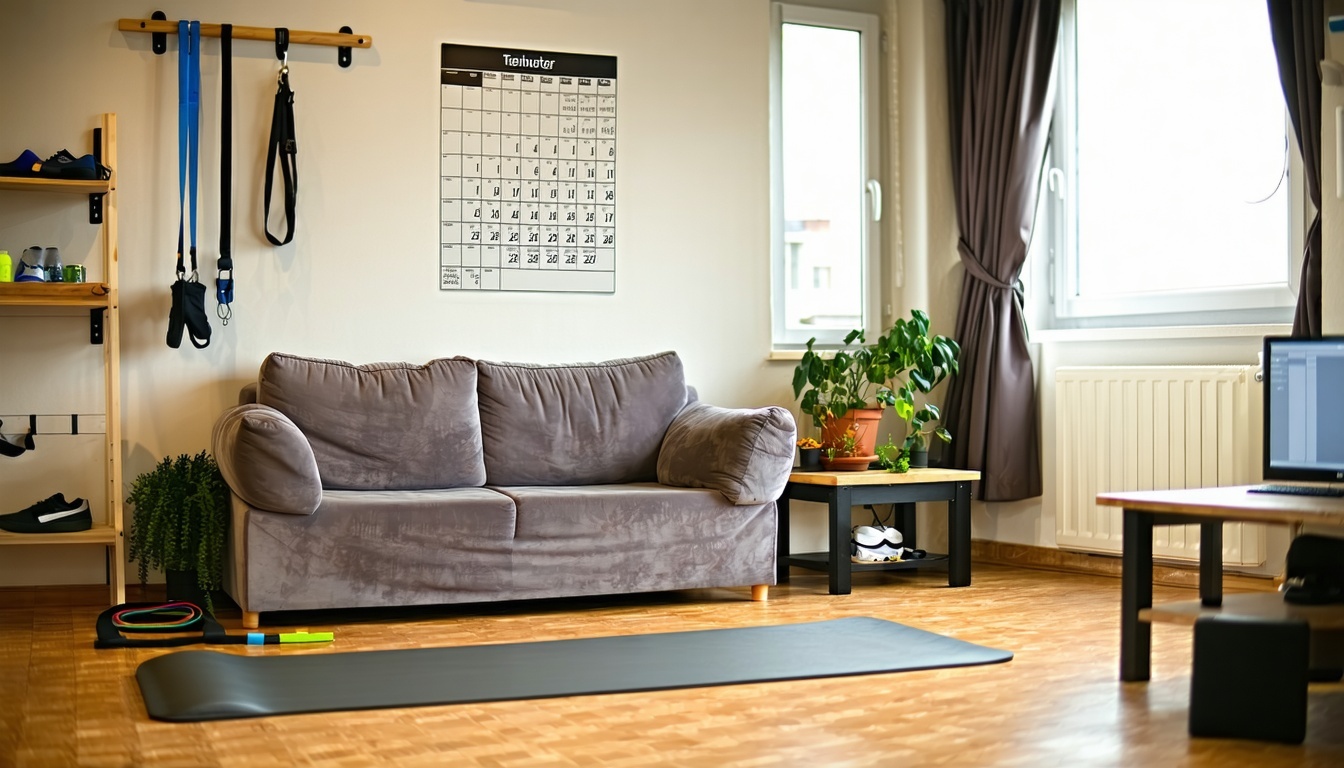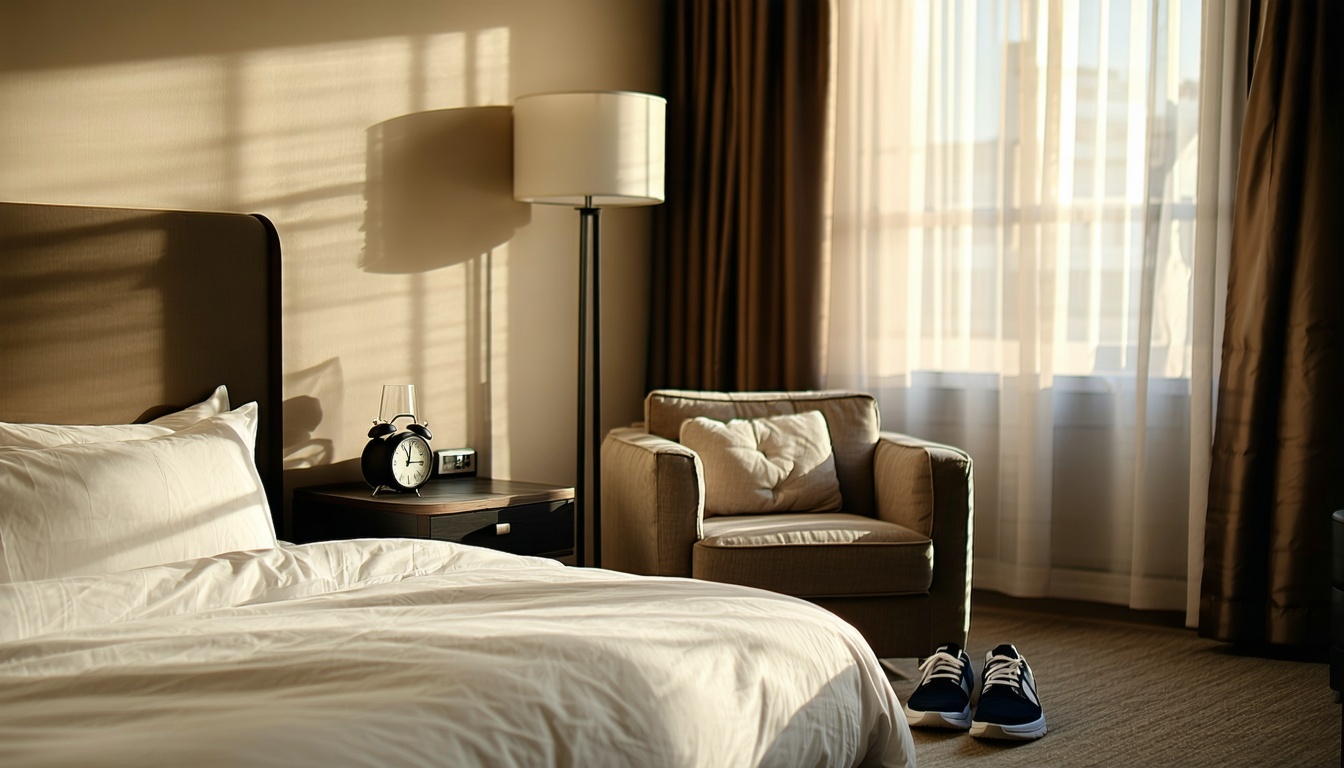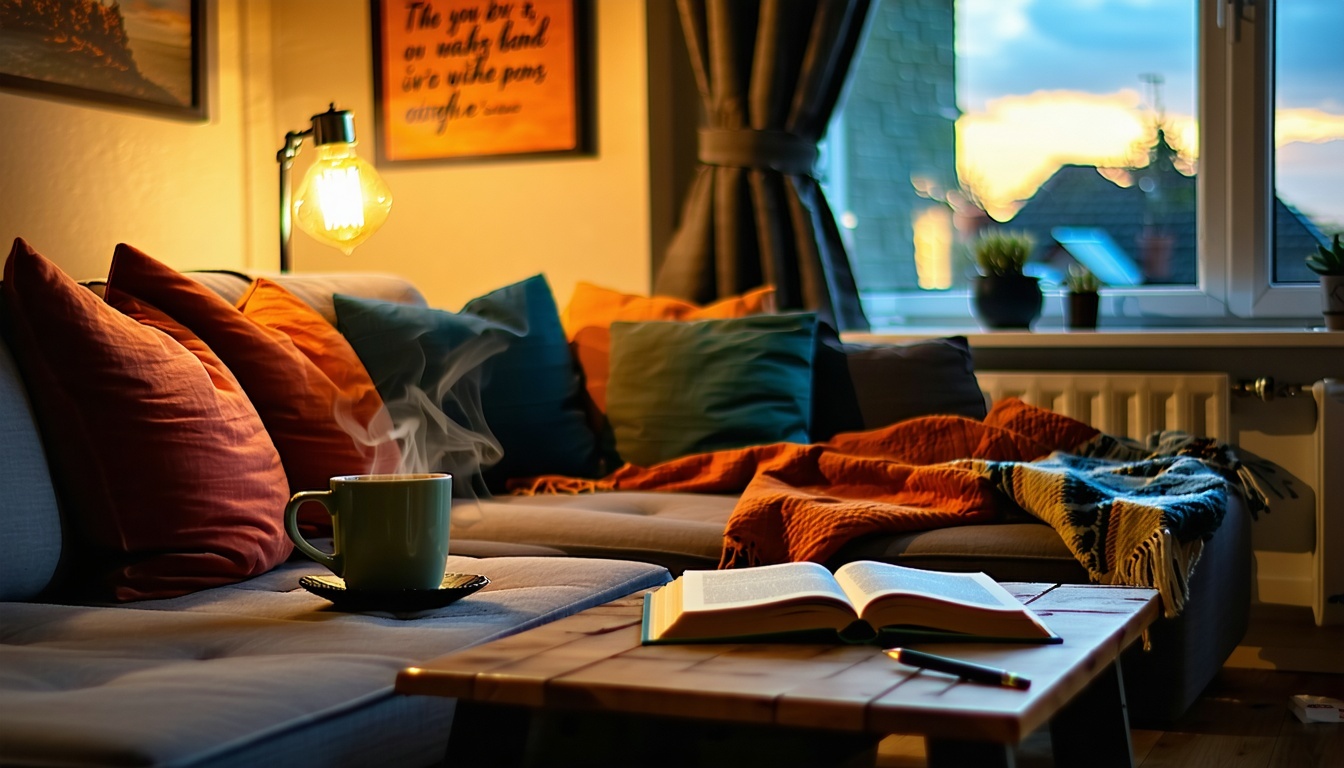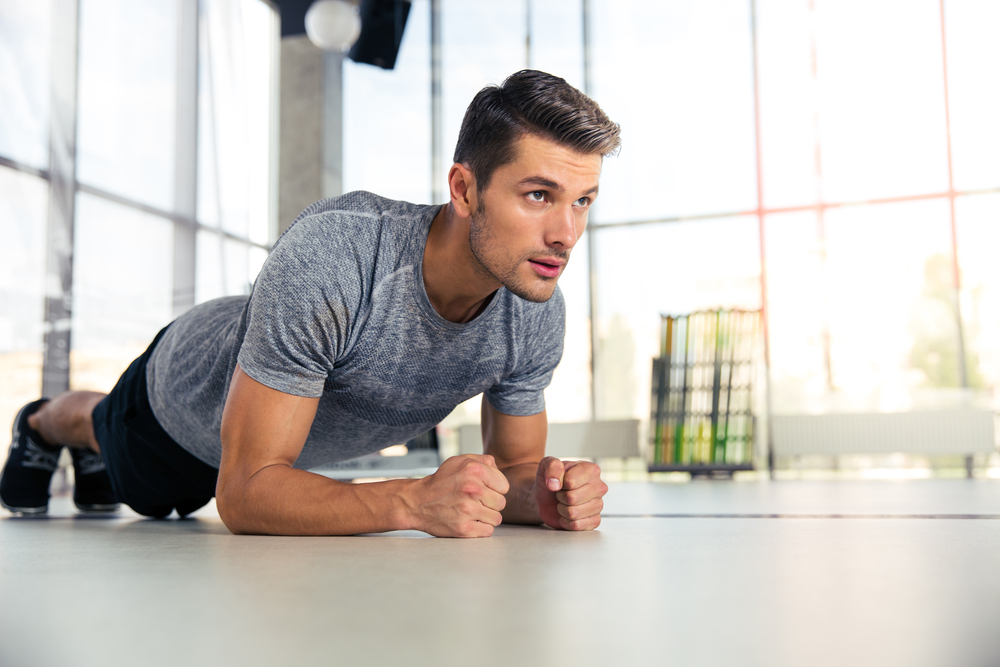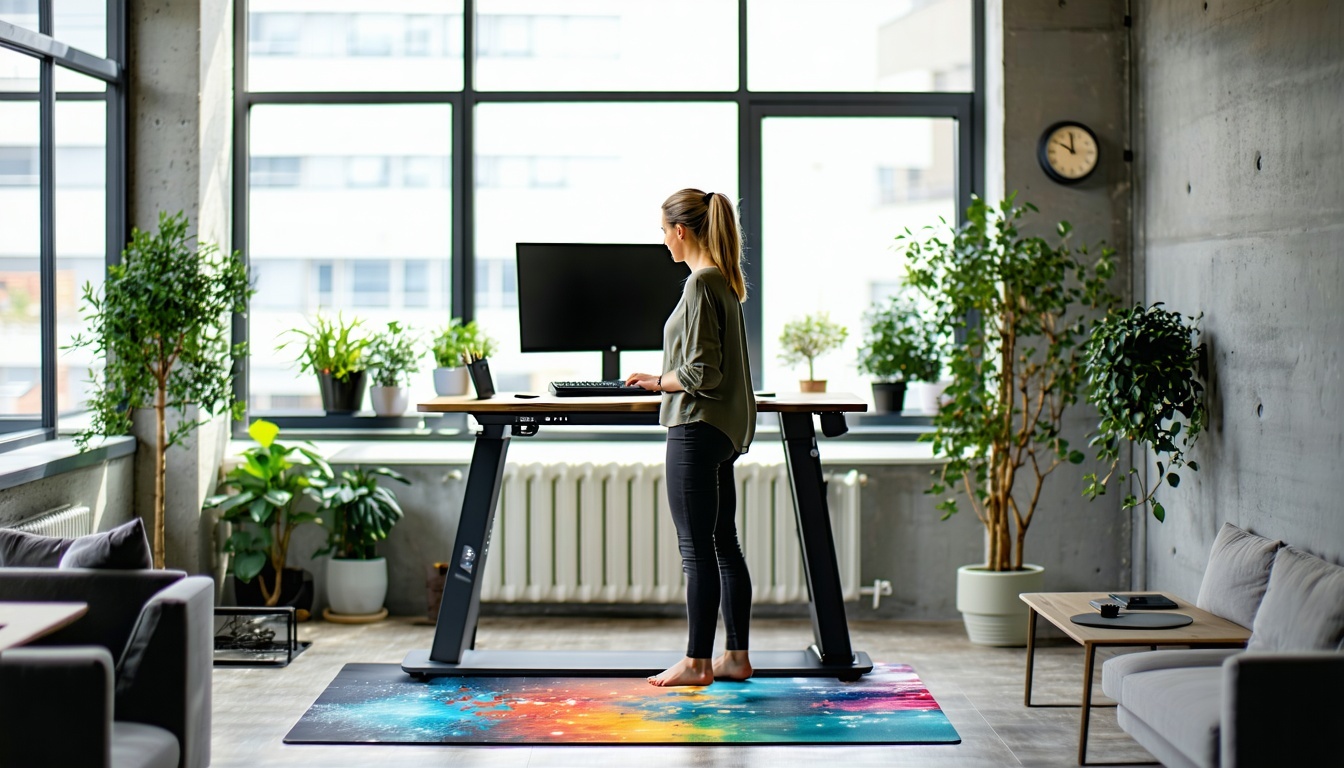Quick Answer
Yes, you can stay fit in a tiny apartment! You only need 6x6 feet of space for effective workouts. Focus on bodyweight exercises like squats, wall push-ups, planks, and lunges. Use vertical space with wall exercises, choose quiet movements to respect neighbors, and create 10-20 minute routines that don't require moving furniture. Resistance bands add variety without taking storage space.
The Complete Guide to Staying Fit in a Tiny Apartment: 20 Space-Efficient Exercises
Living in a tiny apartment doesn't mean your fitness goals have to shrink to match your square footage. Whether you're in a 300-square-foot studio in Manhattan, a cramped one-bedroom in San Francisco, or any small urban space where your bed doubles as your couch and your kitchen table serves as your desk, you can still maintain an effective fitness routine.
The key isn't finding more space – it's maximizing the space you have. This isn't about compromising on your fitness goals or settling for "good enough" workouts. It's about discovering that some of the most effective exercises require nothing more than your body weight and a few square feet of floor space.
Forget the gym membership you can't afford and the home gym equipment you can't fit. Your tiny apartment is about to become your personal fitness studio, complete with everything you need for strength training, cardio, flexibility, and stress relief. All you need is the knowledge of how to use your space efficiently and the commitment to show up consistently.
The Psychology of Small Space Fitness
Before we dive into specific exercises, let's address the mental game. Working out in a tiny space can feel limiting at first, but it actually offers several psychological advantages:
Convenience Eliminates Excuses: Your workout space is always available, never crowded, and requires zero commute time. Bad weather, late hours, and busy schedules become irrelevant.
Privacy Builds Confidence: No one is watching, judging, or waiting for equipment. You can focus entirely on your workout without self-consciousness.
Consistency Becomes Easier: When your workout space is always set up and accessible, you're more likely to exercise regularly.
Creativity Enhances Engagement: Working within constraints forces creativity, making workouts more mentally engaging and less monotonous.
Minimalism Reduces Overwhelm: Without endless equipment options, you focus on mastering fundamental movements that provide the best results.
Space Assessment and Optimization
Every tiny apartment is different, but most can accommodate effective workouts with smart space utilization:
Minimum Space Requirements
Floor Space: You need approximately 6 feet by 6 feet of clear floor space for most exercises. This is about the size of a queen bed or a small area rug.
Ceiling Height: Standard 8-foot ceilings allow for most exercises. If you have lower ceilings, focus on floor-based and seated exercises.
Wall Space: Access to at least one wall opens up numerous exercise options for support, resistance, and stability.
Space Optimization Strategies
Furniture as Equipment: Your couch becomes a platform for incline push-ups, your wall becomes a squat support, and your coffee table can provide elevation for exercises.
Vertical Utilization: Use wall space for exercises that take advantage of gravity and resistance without requiring floor space.
Multi-Purpose Areas: The space between your bed and wall, the area in front of your TV, or the spot where you normally do yoga can all serve as workout zones.
Quick Setup/Breakdown: Choose exercises that require no equipment setup or can be done with items you already have accessible.
The 20 Essential Tiny Apartment Exercises
These exercises are specifically chosen for their effectiveness in small spaces, minimal noise production, and ability to provide comprehensive fitness benefits.
Upper Body Strength (No Equipment Needed)
1. Wall Push-Ups: Stand arm's length from a wall, place palms flat against it at shoulder height, and perform push-ups. Adjust difficulty by changing your distance from the wall. This works chest, shoulders, and triceps without requiring floor space.
2. Incline Push-Ups (Couch/Bed): Place hands on your couch or bed edge and perform push-ups at an incline. This is easier than floor push-ups but more challenging than wall push-ups, providing perfect progression.
3. Pike Push-Ups: Start in a downward dog position and lower your head toward the floor. This targets shoulders and upper chest while requiring minimal space.
4. Tricep Dips (Chair/Couch): Sit on the edge of a sturdy chair or couch, place hands beside your hips, and lower your body by bending your elbows. This effectively targets the back of your arms.
5. Isometric Wall Sit with Arm Raises: Hold a wall sit position while raising and lowering your arms. This combines lower body strength with upper body endurance.
Lower Body Power
6. Bodyweight Squats: The foundation of lower body training. Stand with feet shoulder-width apart and lower as if sitting in a chair. Focus on proper form over speed or quantity.
7. Reverse Lunges: Step backward into a lunge position, keeping your front knee over your ankle. This requires less forward space than traditional lunges while being easier on the knees.
8. Single-Leg Glute Bridges: Lie on your back, lift one leg, and raise your hips using the planted leg. This targets glutes and hamstrings while improving balance.
9. Wall Sit: Lean against a wall with your back flat and slide down until your thighs are parallel to the floor. Hold this position to build leg strength and endurance.
10. Calf Raises: Rise up on your toes and lower slowly. Use a wall for balance if needed. This strengthens your calves and improves ankle stability.
Core and Stability
11. Plank Variations: Standard plank, side planks, and plank with leg lifts. These require minimal space while providing comprehensive core strengthening.
12. Dead Bug: Lie on your back with arms extended toward the ceiling and knees bent at 90 degrees. Lower opposite arm and leg slowly. This improves core stability and coordination.
13. Bird Dog: Start on hands and knees, extend opposite arm and leg simultaneously. This works your entire core while improving balance and posture.
14. Modified Mountain Climbers: In a plank position, bring knees toward chest alternately in a controlled manner. Keep the movement slow to reduce noise for neighbors.
15. Seated Russian Twists: Sit with knees bent, lean back slightly, and rotate your torso side to side. This can be done on your bed or floor.
Cardio and Conditioning
16. Marching in Place: Lift knees high while marching in place. Add arm movements for increased intensity. This provides cardio benefits without jumping or noise.
17. Step-Ups (Using Sturdy Surface): Step up onto a sturdy surface like a coffee table or couch, then step down. This provides cardio and leg strengthening.
18. Shadow Boxing: Throw punches in the air while moving your feet. This provides cardio, coordination, and stress relief without equipment.
19. Squat to Calf Raise: Perform a squat, then rise up on your toes at the top. This combines strength and cardio while working multiple muscle groups.
20. Isometric Hold Circuit: Cycle through holding different positions (plank, wall sit, single-leg stand) for 30-60 seconds each. This builds strength and endurance simultaneously.
Neighbor-Friendly Workout Strategies
One of the biggest concerns about apartment workouts is disturbing neighbors. Here's how to stay fit while being considerate:
Noise Reduction Techniques
Yoga Mat Investment: A thick yoga mat or exercise mat significantly reduces impact noise and provides cushioning for floor exercises.
Controlled Movements: Focus on slow, controlled movements rather than explosive or bouncing exercises. This is often more effective for strength building anyway.
No-Jump Alternatives: Replace jumping jacks with marching in place, substitute burpees with step-ups, and use controlled squats instead of jump squats.
Timing Consideration: Exercise during reasonable hours (typically 8 AM - 9 PM) and avoid early morning or late evening workouts that might disturb sleeping neighbors.
Sound-Absorbing Setup
Carpet or Rugs: Exercise on carpeted areas when possible, or place additional rugs under your workout space.
Furniture Padding: Place towels or blankets under equipment or furniture you're using to reduce vibration transmission.
Wall Exercises: Focus on wall-based exercises that don't create floor impact noise.
Creating Effective Workout Routines
Having individual exercises is just the beginning. Here's how to combine them into effective routines for your tiny space:
The 10-Minute Morning Energizer
Perfect for starting your day with energy and movement:
2 minutes: Gentle warm-up (arm circles, leg swings, marching in place)
6 minutes: Circuit of squats, wall push-ups, plank, and calf raises (30 seconds each, repeat 3 times)
2 minutes: Cool-down stretching
The 15-Minute Strength Builder
Focus on building strength with bodyweight exercises:
3 minutes: Dynamic warm-up
10 minutes: Strength circuit (squats, push-ups, lunges, planks, tricep dips - 45 seconds work, 15 seconds rest)
2 minutes: Flexibility and cool-down
The 20-Minute Full-Body Challenge
Comprehensive workout for maximum fitness benefits:
3 minutes: Warm-up and mobility
15 minutes: Three rounds of full-body circuit (5 minutes each round)
2 minutes: Cool-down and stretching
The 5-Minute Stress Buster
Quick routine for stress relief and energy boost:
1 minute: Deep breathing and gentle movement
3 minutes: Gentle exercises (wall push-ups, marching, stretching)
1 minute: Relaxation and mindfulness
Equipment-Free vs. Minimal Equipment Options
While bodyweight exercises are incredibly effective, a few small pieces of equipment can enhance your tiny apartment workouts:
Completely Equipment-Free
All 20 exercises listed above can be performed with zero equipment, using only your body weight and existing furniture. This approach is perfect for:
Budget Constraints: No financial investment required
Space Limitations: No storage space needed
Simplicity: No setup or breakdown time
Travel: Routine works anywhere you have basic space
Minimal Equipment Additions
If you have a small budget and minimal storage space, consider these compact additions:
Resistance Bands: Provide variable resistance for strength training, take up virtually no storage space, and add dozens of exercise options.
Suspension Trainer: Attaches to doors and provides full-body workout options in minimal space.
Yoga Mat: Provides cushioning, defines your workout space, and reduces noise for neighbors.
Light Dumbbells or Kettlebell: If you have storage space, one set of light weights can significantly expand exercise options.
Motivation and Consistency in Small Spaces
Staying motivated for home workouts can be challenging. Here are strategies specific to tiny apartment fitness:
Environmental Cues
Designated Workout Space: Even if it's just a yoga mat that you roll out, having a defined workout area helps create the right mindset.
Visual Reminders: Keep workout clothes visible or place a note where you'll see it as a reminder to exercise.
Music and Atmosphere: Create a workout playlist and use lighting to transform your space into an exercise environment.
Routine Integration
Habit Stacking: Attach your workout to an existing habit, like exercising right after your morning coffee or before your evening shower.
Micro-Workouts: Break exercise into smaller chunks throughout the day rather than trying to find large blocks of time.
Flexibility: Have multiple routine options (5, 10, 15, 20 minutes) so you can always find something that fits your available time and energy.
Tracking Progress Without a Gym
Monitor your fitness progress using methods that work in small spaces:
Performance Metrics
Repetition Tracking: Count how many squats, push-ups, or other exercises you can do in a set time period.
Hold Times: Track how long you can hold planks, wall sits, or other isometric exercises.
Workout Frequency: Monitor how consistently you're exercising each week.
Energy Levels: Notice improvements in daily energy and mood.
Body Awareness
Strength Improvements: Notice when exercises become easier or when you can progress to more challenging variations.
Flexibility Gains: Track improvements in range of motion and ease of movement.
Balance and Coordination: Monitor improvements in stability and movement quality.
Seasonal Adaptations
Your tiny apartment workout routine can adapt to different seasons and circumstances:
Winter Motivation
Vitamin D Consideration: Exercise near windows when possible to maximize natural light exposure.
Warmth Generation: Use exercise to warm up your space and your body during cold months.
Mood Boosting: Focus on exercises that boost endorphins to combat seasonal mood changes.
Summer Adjustments
Heat Management: Exercise during cooler parts of the day and ensure good ventilation.
Hydration Focus: Increase water intake before, during, and after workouts.
Intensity Modification: Reduce intensity during extremely hot weather to prevent overheating.
Social Aspects of Solo Apartment Workouts
Working out alone in a small space doesn't have to be isolating:
Virtual Connections
Online Classes: Join virtual fitness classes that you can follow in your small space.
Workout Apps: Use fitness apps that provide guidance and track progress.
Social Media: Share your progress and connect with others doing home workouts.
Accountability Systems
Workout Buddy: Partner with a friend for virtual workout sessions or progress check-ins.
Progress Sharing: Regular updates to friends or family about your fitness routine.
Challenge Participation: Join online fitness challenges that can be done in small spaces.
Long-Term Success Strategies
Building a sustainable fitness routine in a tiny apartment requires long-term thinking:
Progressive Development
Gradual Intensity Increase: Start with easier variations and progress to more challenging exercises over time.
Routine Evolution: Regularly update your routines to prevent boredom and continue challenging your body.
Skill Development: Focus on mastering fundamental movements before adding complexity.
Lifestyle Integration
Habit Formation: Focus on consistency over intensity to build lasting exercise habits.
Flexibility Maintenance: Keep your routine adaptable to changing schedules and life circumstances.
Enjoyment Factor: Choose exercises and routines that you actually enjoy to ensure long-term adherence.
Troubleshooting Common Challenges
"I feel claustrophobic exercising in my tiny space." Open windows for fresh air, use a fan for circulation, and focus on exercises that don't make you feel confined. Wall exercises and stretching can help create a sense of openness.
"I can't get motivated without the gym environment." Create your own environment with music, lighting, and designated workout clothes. Consider virtual classes or workout videos to simulate a group fitness experience.
"My neighbors complain about noise." Focus on the quiet exercises listed above, invest in a thick yoga mat, and exercise during appropriate hours. Consider talking to neighbors to find mutually acceptable workout times.
"I don't feel like I'm getting a 'real' workout." Challenge yourself with longer hold times, more repetitions, or more challenging exercise variations. Remember that consistency and progressive overload matter more than location.
"I keep making excuses not to exercise." Start with just 5 minutes and build from there. Remove barriers by keeping workout clothes accessible and having multiple routine options for different time constraints.
Conclusion: Your Tiny Apartment, Your Fitness Success
Your tiny apartment isn't a limitation – it's an opportunity. An opportunity to discover that effective fitness doesn't require expensive equipment, large spaces, or gym memberships. It requires only commitment, creativity, and the knowledge that your body is the most versatile piece of exercise equipment you'll ever own.
The 20 exercises and strategies in this guide provide everything you need to build strength, improve cardiovascular health, enhance flexibility, and boost your mood – all within the confines of your small living space. More importantly, they prove that fitness is about consistency and effort, not square footage.
Start with just one exercise today. Clear a small space, choose a movement that appeals to you, and commit to doing it for just 5 minutes. Notice how it feels to move your body intentionally in your own space. Pay attention to the immediate benefits – increased energy, improved mood, sense of accomplishment.
Then tomorrow, do it again. And the next day. Before you know it, your tiny apartment will have become your personal fitness studio, complete with everything you need to achieve your health and wellness goals.
Remember, the best workout is the one you'll actually do consistently. And there's no more convenient, accessible, or private workout space than your own home – no matter how small it might be.
Your fitness journey doesn't require more space. It just requires you to start where you are, with what you have, right now. And what you have – your body, your determination, and your tiny apartment – is more than enough.
Related Articles
- The Complete Guide to Staying Fit as a Busy Professional: Solutions for Every Challenge
- The Ultimate Quiet Hotel Room Workout: 12 Exercises That Won't Disturb Anyone
- How to Do Effective Exercises in Your Office Bathroom (Without Anyone Knowing)
- The 2-Minute Morning Motivation Routine That Changes Everything

